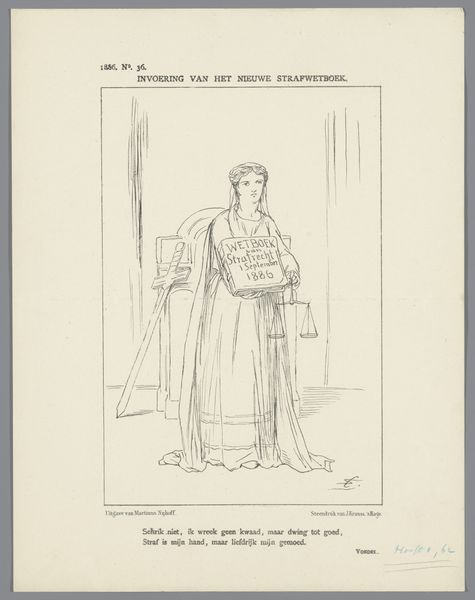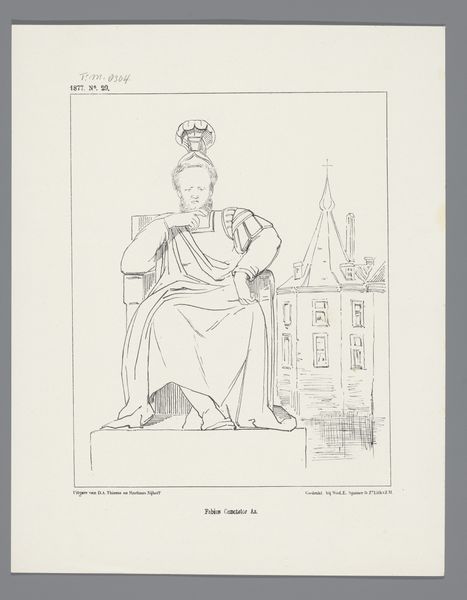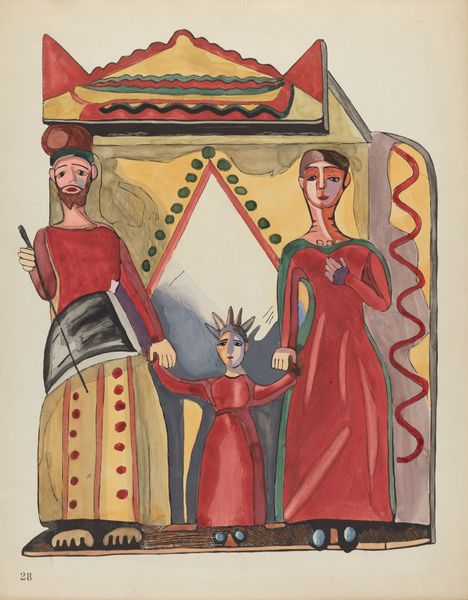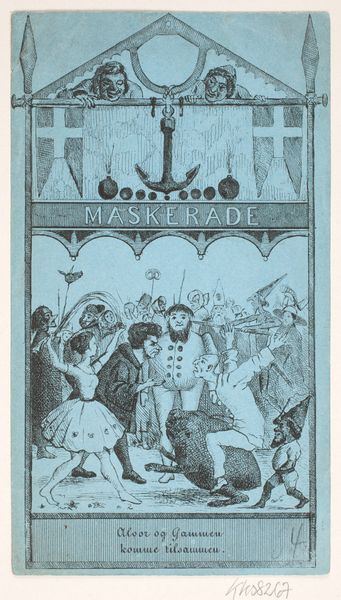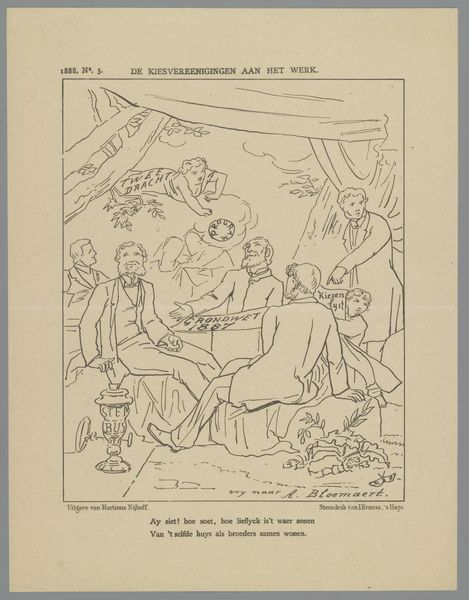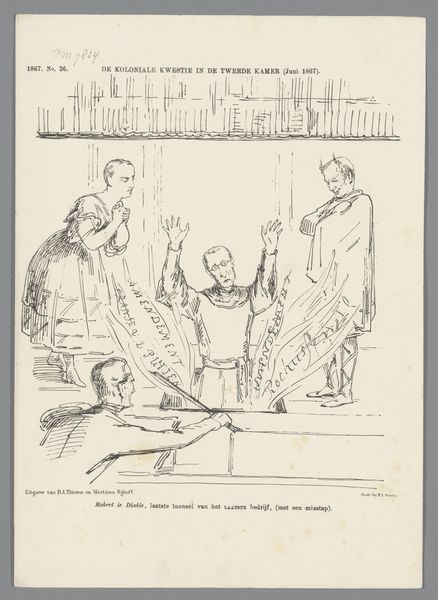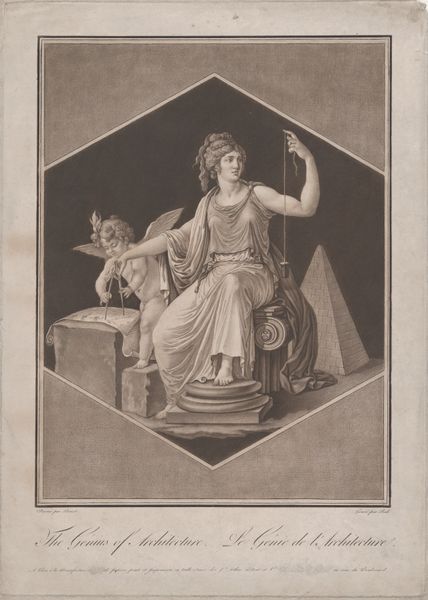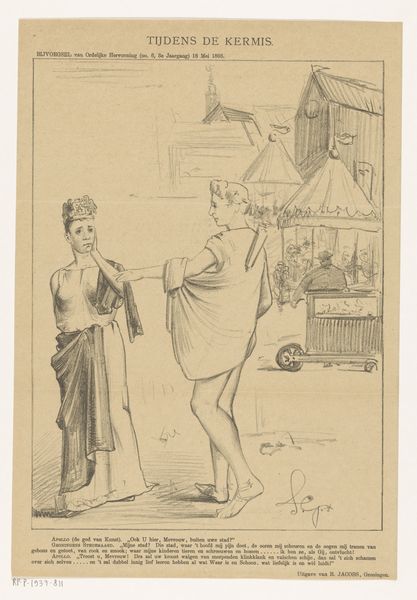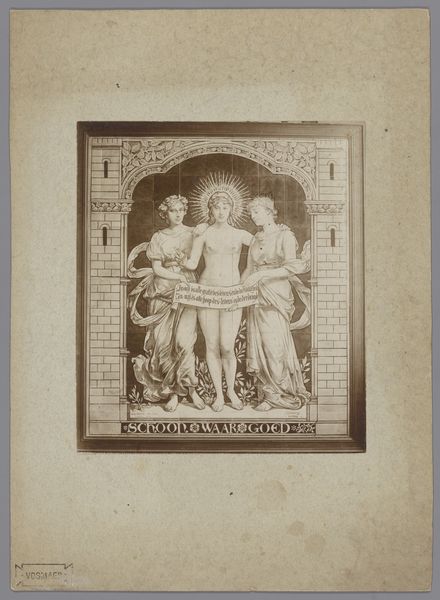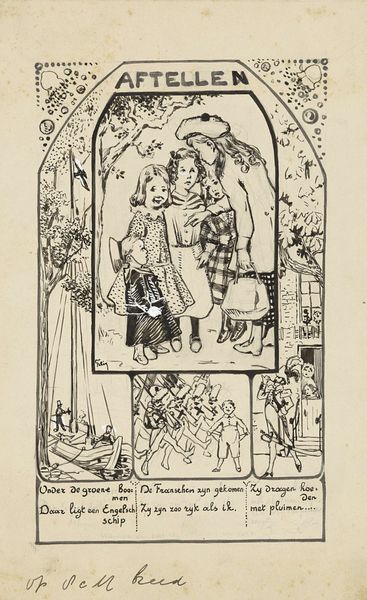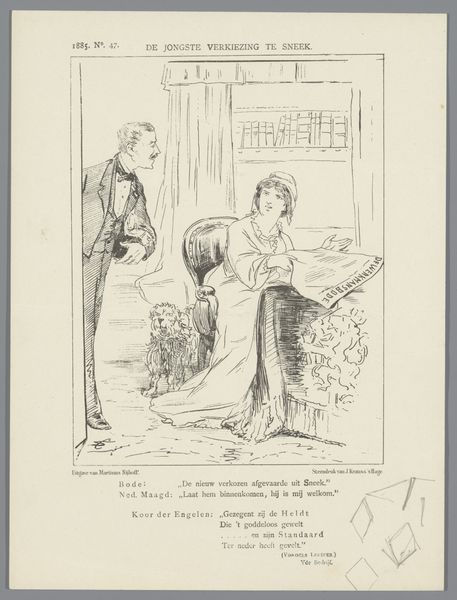
Plate 28: The Holy Family: From Portfolio "Spanish Colonial Designs of New Mexico" 1935 - 1942
0:00
0:00
drawing
#
drawing
#
figuration
Dimensions: overall: 35.6 x 28 cm (14 x 11 in.)
Copyright: National Gallery of Art: CC0 1.0
Curator: Plate 28, "The Holy Family: From Portfolio 'Spanish Colonial Designs of New Mexico,'" dates from between 1935 and 1942, and it's a drawing by an anonymous artist. The scene, rendered with a striking minimalist style, presents us with Joseph, Mary, and the Christ Child. Editor: My first thought? It's so stark, yet strangely comforting. There’s a primitive quality that feels incredibly sincere. Like a child's drawing imbued with reverence. Curator: That's interesting. When viewed through a postcolonial lens, the simplification could be interpreted as a reclaiming of indigenous artistic styles, subverting the traditionally ornate and imposing visual language of European religious art. Editor: Hmm, maybe. Or maybe someone just had a really pared-down idea of the Holy Family! I see almost a folk art sensibility; very humble, but very solid in the depiction of this foundational scene. The line work itself—it has this beautiful hesitancy to it. Curator: Right. And within the historical context of its creation, this artwork serves as a documentation and an interpretation. Part of a larger project focused on documenting and potentially revitalizing artistic traditions considered culturally significant in New Mexico at that time. These artworks provide insights into the dialogue between colonizer and colonized religious expression. Editor: I notice that both Mary and Joseph seem to be watching over the Child who gestures outwardly almost beckoning toward us to participate, to be a part of that intimate connection. They all look so serious but maybe happy within themselves to be standing as the family they are. Curator: The artist also frames the holy figures under an arch that seems as a temple that emphasizes the sanctity of the Holy Family, which contrasts the indigenous heritage to Roman traditions. I see this tension embodied in what would’ve otherwise have just been regarded as a charming traditional piece. Editor: For me, its appeal is less intellectual. It evokes that primal connection – family as a safe haven and an almost naïve but honest, sincere belief. A visual lullaby, if you will. Curator: So ultimately, a meeting point for cultural and artistic interpretations, each of equal importance. Editor: Absolutely. An open book for viewers to form their personal, yet intersectional, insights.
Comments
No comments
Be the first to comment and join the conversation on the ultimate creative platform.
